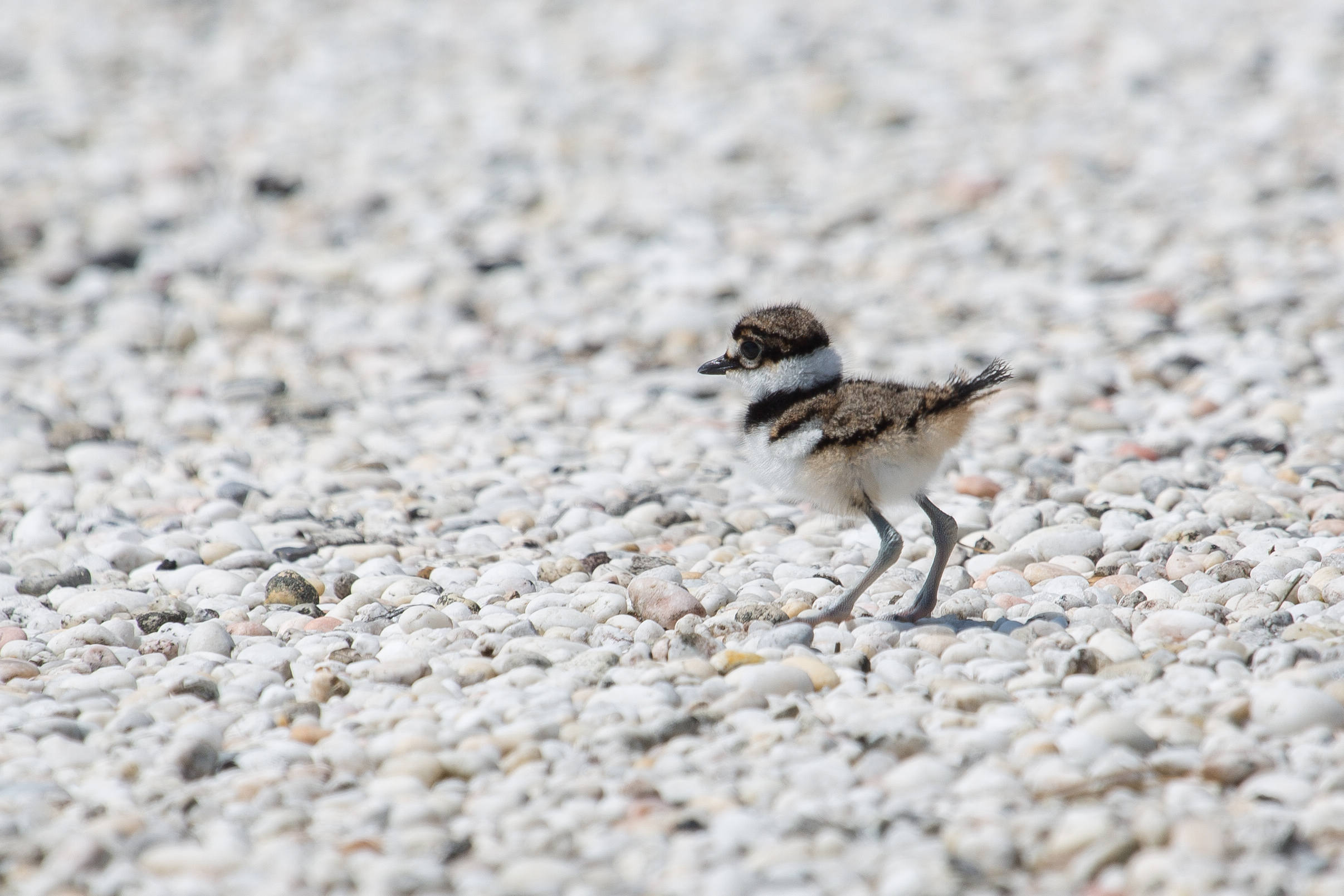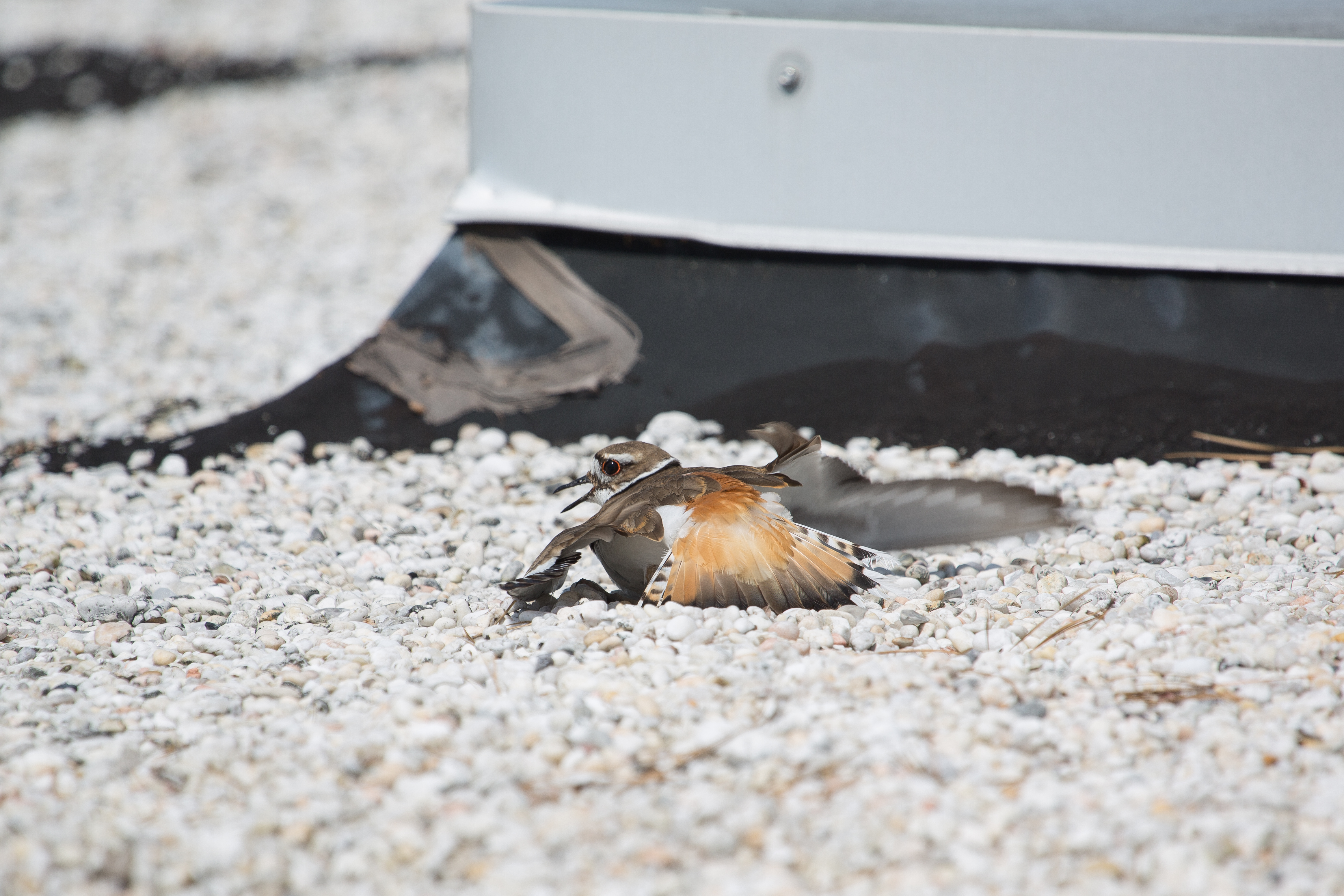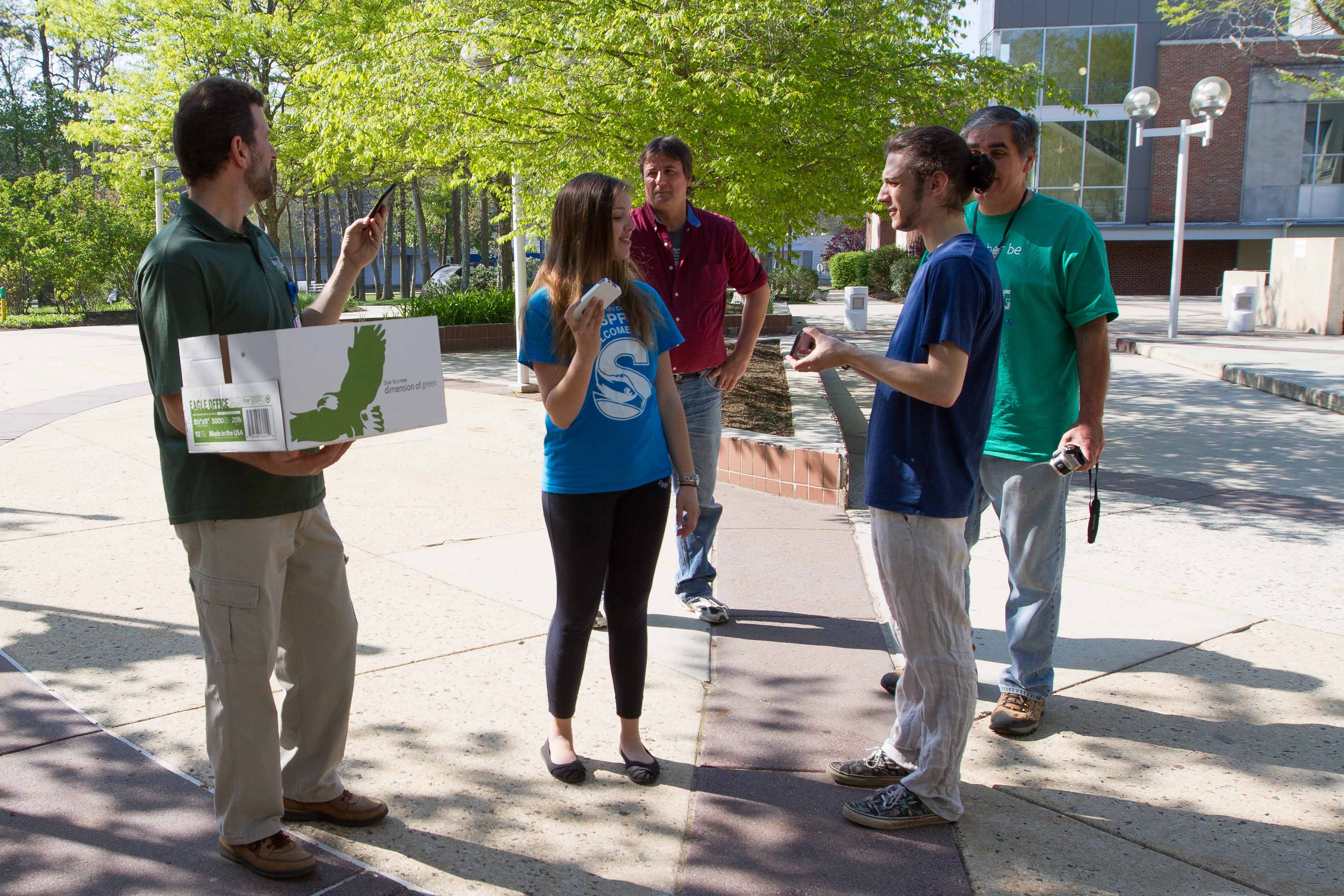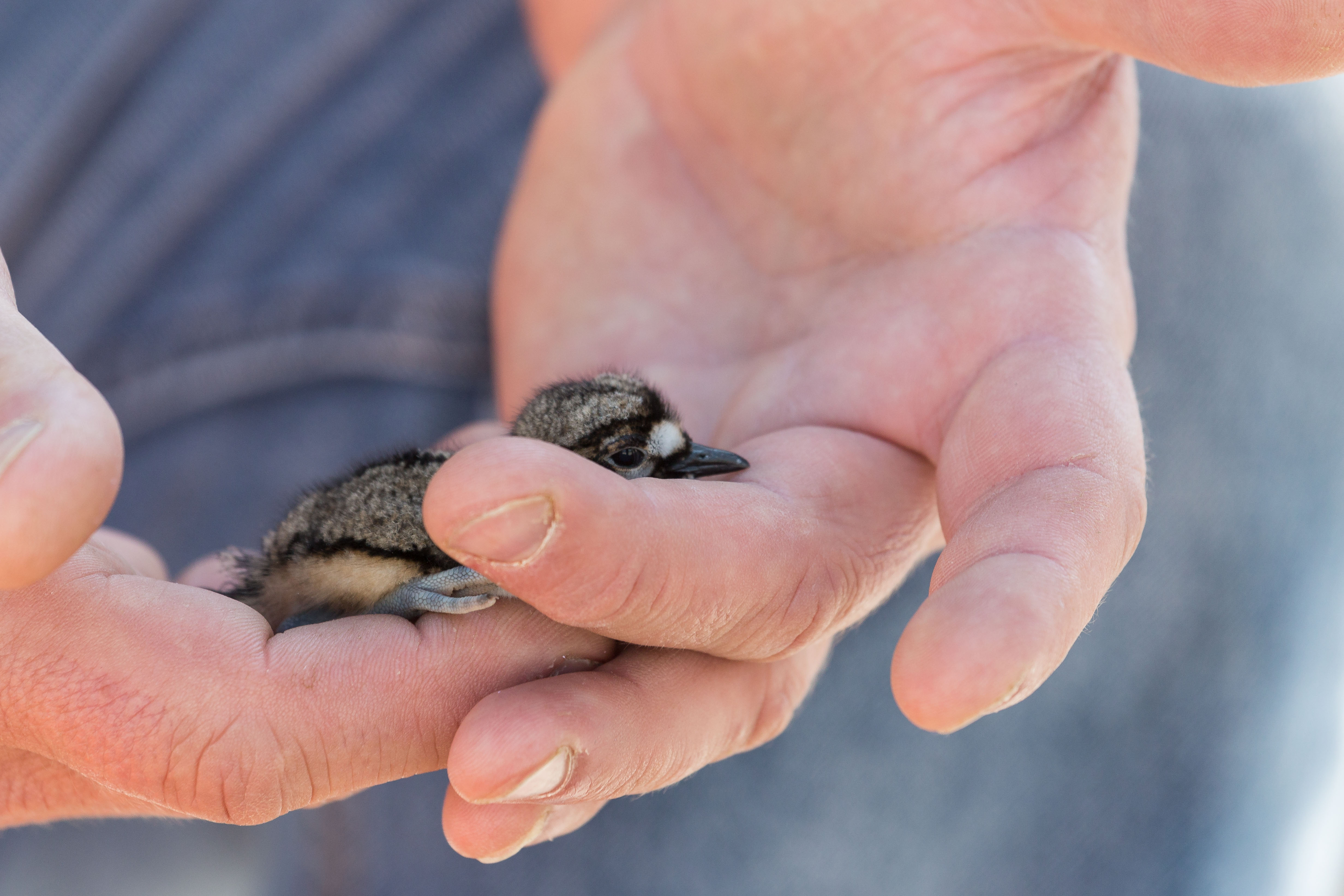Four fuzzy killdeer chicks dashed across the I-wing gymnasium’s pebble rooftop in every direction on May 8. The chicks hatched from their rooftop nest—a shallow depression scraped into the stones—the previous day.
With limited food and no source of fresh water on the roof, the chicks, still unable to fly, would not survive. Killdeer parents do not feed their young.
John Rokita, principal lab technician in the Animal Lab, Steve Brown, assistant supervisor of building repair, Dennis Lepore, safety and health compliance coordinator, Lester Block, a professional service specialist in the School of Natural Sciences and Mathematics, and Animal Lab student workers Melissa Laurino and Mikey Carman, convened at the entrance to the roof for a rescue mission.
For years, killdeer have nested on the I-Wing rooftop.
The seasoned team of Rokita, Brown and Lepore corralled the chicks one at a time, gently scooping them up and placing them into a cardboard box. The killdeer parents flapped their wings frantically to fake broken wings, a tactic they use to lure predators away from their young.
Within minutes, the chicks were carefully escorted down the stairwell, through the hall and back outside to the K-Wing courtyard where they were released within sight from the rooftop. Soon after, they began scurrying around the concrete planters.
Everyone turned their cellphones to the highest volume and played sound clips of killdeer chicks calling. The amplified calls helped all of the chicks reunite with their parents.
Killdeer are medium-sized plovers, but unlike most shorebirds, they can be found offshore in dry, open fields. They often nest on gravel rooftops, rocky driveways or parking lots. “Incubation (24 -28 days) starts after the fourth egg is laid so as to have all the young hatch at the same time. The young grow quickly and leave the parents (fledge/able to fly) between 21-30 days of age,” explained Rokita.
All chicks and the parents have been seen in various spots on campus. Last week Rokita gave an update: “Five days on the ground and all are still surviving. If left on the roof they would not have been. All look very perky and alert. They have grown quite a bit since the rooftop rescue.”



